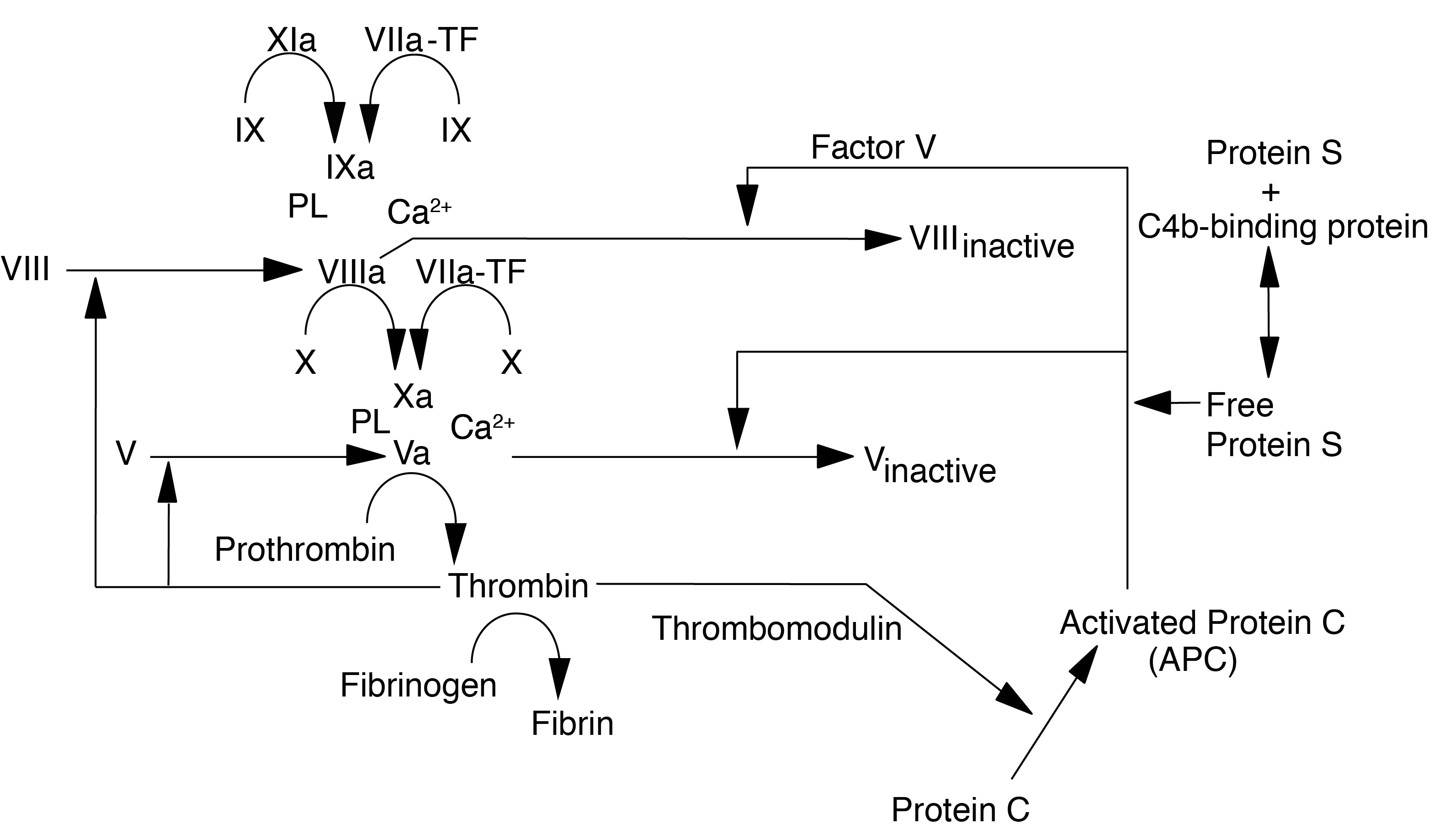Introduction
The ProC Global Assay is an APTT-based assay in which Protac© [a snake venom isolated from Agkistrodon contortrix] is used to activate endogenous Protein C. The test was designed to rapidly screen for abnormalities in the Protein C-Protein S pathway including APC resistance - see below.

Principles & Method
In this assay, patient plasma is incubated with an APTT reagent and then either an 'activation solution' containing Protac© is added or a buffer. The APTT containing the Protac is termed PCAT whilst the APTT without the buffer is termed PCAT-0. The two clotting times are recorded after the addition of 0.025M Calcium Chloride.
The results of this assay are expressed as the PCAT-normalised ratio [PCAT-NR] which is obtained by dividing the patient's PCAT ratio [PCAT/PCAT-0] by the PCAT ratio of a standard plasma. Each standard reference plasma is calibrated against an internal reference plasma pool with a sensitivity value [SV] assigned to it of 1.0 Each subsequent reference plasma is calibrated against this pool.

Interpretation
1. The assay does not perform well in samples from patients on oral anticoagulants or with liver failure as the PCAT-NR is reduced even in the absence of any abnormality.
2. 38% of patients without any abnormality had a decreased PCAT-NR.
3. With an appropriate cut-off [PCAT-NR = 0.75] the test can detect all patients with the Factor V Leiden mutation. The test appears to be good at detecting Protein C deficiency [90% cases] but less so for the identification of patients with Protein S deficiency [63%].
Reference Ranges
The normal range for the ProC Global Assay (based on published data) is 0.77 - 1.80 with a median of 1.05.
What Test Next
The ProC Global assay is not widely performed and has in most cases been replaced by fully automated Protein C and S assays and APC resistance assays.
